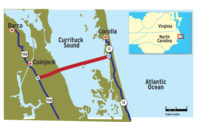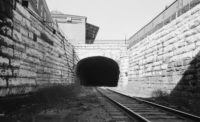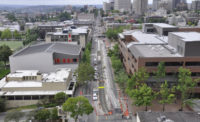After more than ten years, four mayors, $200 million, and a plethora of planning, construction and testing issues, the first segment of Washington, D.C.’s self-funded streetcar line became operational on Feb. 27. But how much of a planned 22-mile extension can move forward remains to be seen.
Constructed by a joint venture of M.C. Dean, Inc., and Facchina Construction Co., Inc., with Systra and Johnson, Mirmiran & Thompson (JMT) as lead designers, the 2.2-mile east-west segment between the Anacostia River and Union Station is the start of what the District of Columbia Dept. of Transportation (DDOT) envisions as a 37-mile network.
But while most of the startup segment’s infrastructure has been in place for more than a year, an American Public Transportation Association peer review released last June identified 18 critical issues—including cracked rails, variances in platform angles, conflicts with moving and parked vehicles, and problematic rolling stock mechanical systems—that required attention before the streetcar line could open.
Those delays were compounded by a protracted process of testing and operational approvals by federal and District regulators, with the final sign-offs completed in early February.
The line’s five streetcars are running six days a week with 15-minute headways, and at no charge while a fare collection system is developed. Initial projections of 1,500 passengers a day are dwarfed by the corridor’s bus service, which handles 12,000 passengers daily.
The DC government remains committed to expanding the system, with environmental planning underway for extending the initial segment by 7.5 miles to Georgetown. However, the strategy and schedule for delivering the extensions, estimated to cost $800 million, is unclear. In Oct. 2014, DDOT shortlisted three builder-operator teams for a P3 agreement. No RFP for those services has been issued. That same year, amid political squabbles, the DC Council cut Mayor Vincent Gray’s $800-million budget for the project by more than half.





Post a comment to this article
Report Abusive Comment